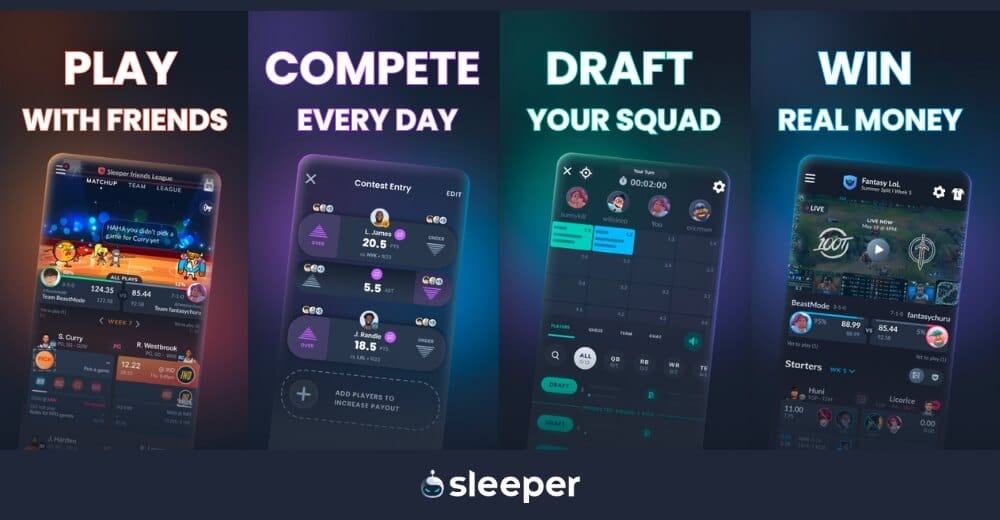When the 200th-best or 300th-best team in the country pulls off an upset of one of the favorites to win it all, well, that’s why we call it March Madness.

How Many Times Has a 16 Seed Beaten a 1 Seed in March Madness?
Nothing puts the madness in March Madness quite like the biggest Cinderella story of them all: a lowly, practically anonymous No. 16 seed upsetting a mighty No. 1 seed.
Not only are the No. 1 seeds the best of college basketball’s best — these are the teams who enter the NCAA tournament with around a dozen high quality wins at the end of a dominant four-month campaign — but the No. 16 seeds are generally far worse than 90 percent of major-conference teams, completely undeserving of a spot in the tournament field unless they first win their conference tournament.
Every once in a while, though, the unthinkable happens. The favorite struggles to put the ball through the hoop, the underdog hits a few miracle shots and an entire nation’s worth of perfect bracket dreams absolutely shatters.
Today, we’ll discuss the historical context of the 16 over 1 upset, as well as reflect on the precious few times it has happened in the history of the NCAA tournament.
Disclaimer: Our focus is on the men’s NCAA tournament, but in the FAQ’s we’ll also get to one gigantic upset from the women’s tournament.
Historical Overview of 1 Seed vs. 16 Seed Matchups
Until the first one actually went final, the idea of a No. 16 seed upsetting a No. 1 seed was laughable.
That’s because the No. 16 seeds are objectively the worst college basketball teams in the NCAA tournament field. In fact, they occasionally enter the dance with a sub-.500 record, only making the cut via automatic bid.
However, there were plenty of close calls before the first David vs. Goliath stunner occurred.
In the very first that included 16 seeds (1985), No. 16 Fairleigh Dickinson (more on them later) almost knocked off No. 1 Michigan in a 59-55 game.
The following year, both No. 1 Duke and No. 1 St. John’s only won their tournament openers by single digits.
In 1989, all hell almost broke loose. No. 1 Georgetown and No. 1 Oklahoma each won their first-round game by a single point, while No. 1 Illinois beat its No. 16 seed counterpart by just six points.
In 1990, No. 1 Michigan State needed overtime to finish off No. 16 Murray State.
For the most part, it was smooth sailing from 1991-2017, save for Purdue narrowly averting disaster with a 73-71 win over Western Carolina in 1996. Beatdown after beatdown for nearly three decades made it feel like No. 1 seeds simply had a bye into the second round.
All told, in the first 33 years (1985-2017) of the 64+ team bracket as we know it today, there were 15 cases (11.4 percent of the possible 132) in which the No. 1 seed only beat the No. 16 seed by single digits, including four instances where the game truly came down to the wire.
Time and time again, however, the national championship hopeful always found a way to beat the gigantic underdog. Eventually, it started to feel like it would never happen.
And then…
Notable Upsets: When Did a 16 Seed Beat a 1 Seed?
In 2018, it finally happened.
In emphatic fashion, no less.
Virginia went 31-2 that season, which included a road win over an elite Duke team led by Marvin Bagley and Grayson Allen, as well as the ACC regular season and conference tournament championships.
Not only were the Cavaliers a No. 1 seed, they were that college basketball season’s No. 1 overall seed. However, somebody forgot to tell the University of Maryland, Baltimore County (UMBC) that it had no hope of winning that game.
The No. 16 seed Retrievers (who entered the game rated 188th best in the nation, per KenPom) played Virginia to a 21-21 draw in the first half before coming out from the intermission covered in NBA Jam flames or something equally magical. They jumped out to a 14-point lead in the blink of an eye en route to a 74-54 upset for the history books.
Virginia was missing a key player (DeAndre Hunter) who broke his wrist days before the start of the dance, but no one imagined it would make that much of a difference in their first (and only) tournament game.
Five years later, lightning struck for the second time when Fairleigh Dickinson shocked Purdue in the first round of the 2023 dance.
The 2023 Boilermakers weren’t quite as good as Virginia was in 2018. They were merely the No. 4 overall seed. But FDU was far, far worse than UMBC, making it in some ways an even more unbelievable upset.
The Knights entered that game rated 299th by KenPom, and they were the selection committee’s dead last, No. 68 overall seed, needing to win a play-in game against Texas Southern just to face Purdue.
Moreover, FDU was the shortest team in the entire country, tasked with slowing down a team led by 7’4” Zach Edey, which seemed completely impossible. Despite not playing anyone taller than 6’6”, they somehow Jedi mind-tricked Purdue into not realizing it could just lob the ball into Edey whenever it darn well pleased. He probably could’ve scored 60 by himself that day, but instead, Braden Smith, Fletcher Loyer and Mason Gillis just kept shooting (and missing) from the perimeter in the 63-58 upset. Purdue went 5-26 from three that day.
What’s perhaps most remarkable about those two historic upsets is how well both teams bounced back from them in the following season. Virginia came back and won it all in 2019, while Purdue recovered enough to make it all the way to the title game of the 2024 tournament.
What about 15-over-2 Upsets? How often do those happen?
The ol’ 15-over-2 upset is nowhere near as common as the 12-over-5 special that barely even feels like an upset at this point, but they have happened far more often than 16-over-1 stunners.
In total, there have been 11 No. 15 seeds that won at least one game in the NCAA tournament, compared to just UMBC and Fairleigh Dickinson pulling off the massive win as a No. 16 seed.
Biggest NCAA Tournament Upsets
Naturally, the Duke and Kentucky losses in the list above were perhaps the most unforgettable, given the stature of those blue-blood programs. But Hampton’s David Johnson carrying around his exuberantly kicking and screaming head coach Steve Merfield after the upset of Iowa State in 2001 remains one of the all-time iconic March Madness moments. The beginning of Florida Gulf Coast’s “Dunk City” run in 2013 was one for the ages, too.
Poor Arizona, though. The Wildcats have a great men’s basketball program that has produced a No. 3 seed or better 20 times in NCAA tournament history, but they're also the only team to suffer multiple first-round losses as either a No. 1 or No. 2 seed.
Frequently Asked Questions
How often do No. 1 seeds win the NCAA tournament?
From 1990-2024, a No. 1 seed won it all in 24 out of 34 NCAA tournaments, which is a bit more than 70 percent of the time.
What’s more, 53 out of a possible 136 No. 1 seeds (39 percent) have made it to the Final Four. So, when one gets eliminated in the first round, it is a mind-blowing, bracket-shattering result.
Has a 16 ever beaten a 1 in the women’s NCAA tournament?
Yes. Once. And the circumstances surrounding that upset were pretty wild.
It happened in 1998, when No. 16 Harvard toppled No. 1 Stanford. The Crimson were hardly your standard No. 16 seed, though, going 22-4 and having the nation’s leading scorer, Allison Feaster. Nor were the Cardinal your standard No. 1 seed after losing two of their three leading scorers to ACL injuries shortly before the tournament began. And against that shorthanded favorite, Feaster went for 35 points and 13 rebounds in a 71-67 upset for the ages.
What’s particularly wild is that through the 2024 tournament, not only was that the only 16 over 1 upset, but there has never been a 15 over 2 nor a 14 over 3 upset in the women’s tournament.
Conversely, there were eight first-round upsets by 15 seeds in the men’s tournament and 21 by 14 seeds before the first 16 seed got one.
How have the play-in / First Four games impacted the 1 vs. 16 playing field?
The impact seems to be that the top of the No. 16 seed line is stronger.
From 1985-2000, the 16 seeds were the four worst teams. They added one play-in game in 2001 to make it five 16 seeds, and then expanded to 68 teams in 2011 for the current setup with six 16 seeds.
When UMBC pulled off its upset of Virginia, the Retrievers were the highest seeded team on that bottom line and would’ve been a 15 seed eight years prior.
The other likely impact is that the 16 seeds in the play-in games get to shake out some of those “holy cow, we’re really playing in the NCAA tournament” nerves two days before facing one of the best teams in the country — not to mention the confidence boost that comes with winning that first game, regardless of the fact that it comes against a fellow 16 seed.
Boost Your Fantasy Basketball and Bracket Strategy with Sleeper!
When Selection Sunday rolls around in mid-March and you’re searching for the best place to host your bracket pool, look no further than Sleeper’s Bracket Mania.
You can have up to 10,000 participants in your bracket pool, or make it private and just keep it to a small group of friends. Either way, you can see throughout the tournament where your bracket ranks globally.
Shortly after the field is revealed, you’ll get to read little blurbs about each of the teams in the tournament, in case you need any stats, help or just the occasional chuckle while filling out your bracket.
Once the tournament has begun and entries are locked in, Sleeper takes care of marking all those winners and losers while you use the in-app chat for bragging rights and/or sob stories about where it all went wrong.
Of course, March Madness only encompasses a small fraction of the calendar, but Sleeper has you covered year-round with a multitude of fantasy offerings. If you can’t find something on there that you would enjoy as a sports fan, you probably didn’t look very hard.




